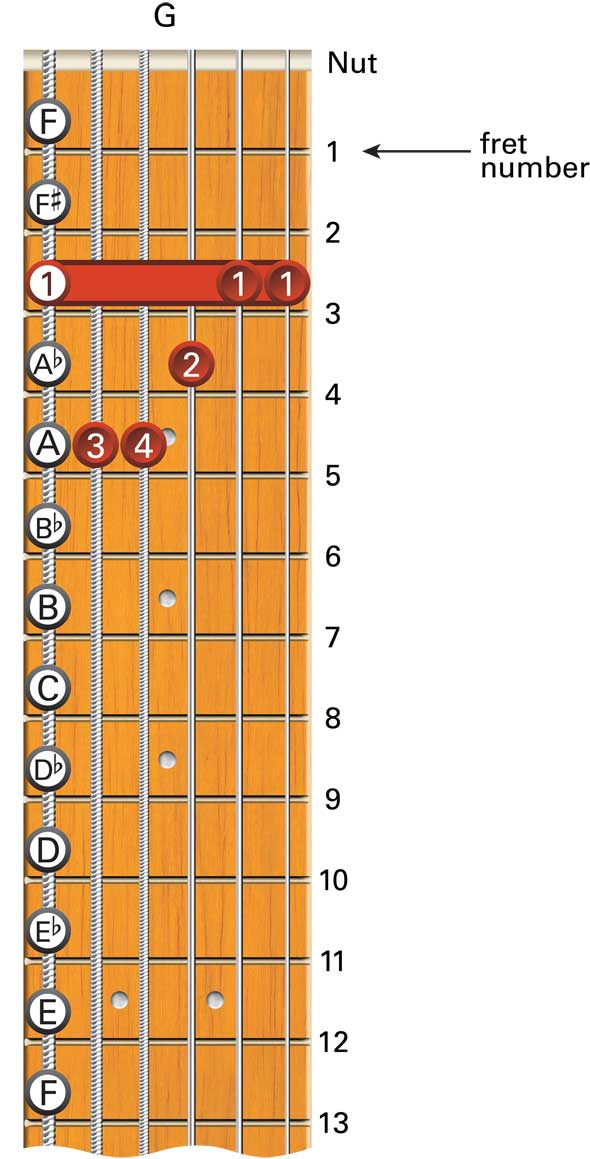
Bar Chord Diagrams
When a new bar chord shape is introduced it is shown at different positions on the fretboard. These shapes can be moved up or down the fretboard. The root note (i.e., the note after which the chord is named) is indicated by a white dot, i.e., ! on the fretboard. If the root note is on the sixth string, the chord shape is called a root 6 chord shape. If the root note is on the fifth string, the chord shape is called a root 5 chord shape. If the root note is on the fourth string, the chord shape is called a root 4 chord shape.
Root 6

The following diagram shows a root 6 - G major bar chord, the same as the chord demonstrated in the photograph at the start of this section. The root note of a G chord is G.
If this bar chord shape was played two frets higher it would be an A major chord as indicated by the A note at the 5th fret of the sixth string (root 6).
Root 5

The following diagram shows a root 5 - C major bar chord, the same as the chord demonstrated in the photograph at the start of this section. The root note of a C chord is C.
If this bar chord shape was played three frets higher it would be an E flat (Eb ) major chord as indicated by the Eb note at the 6th fret of the fifth string (root 5).